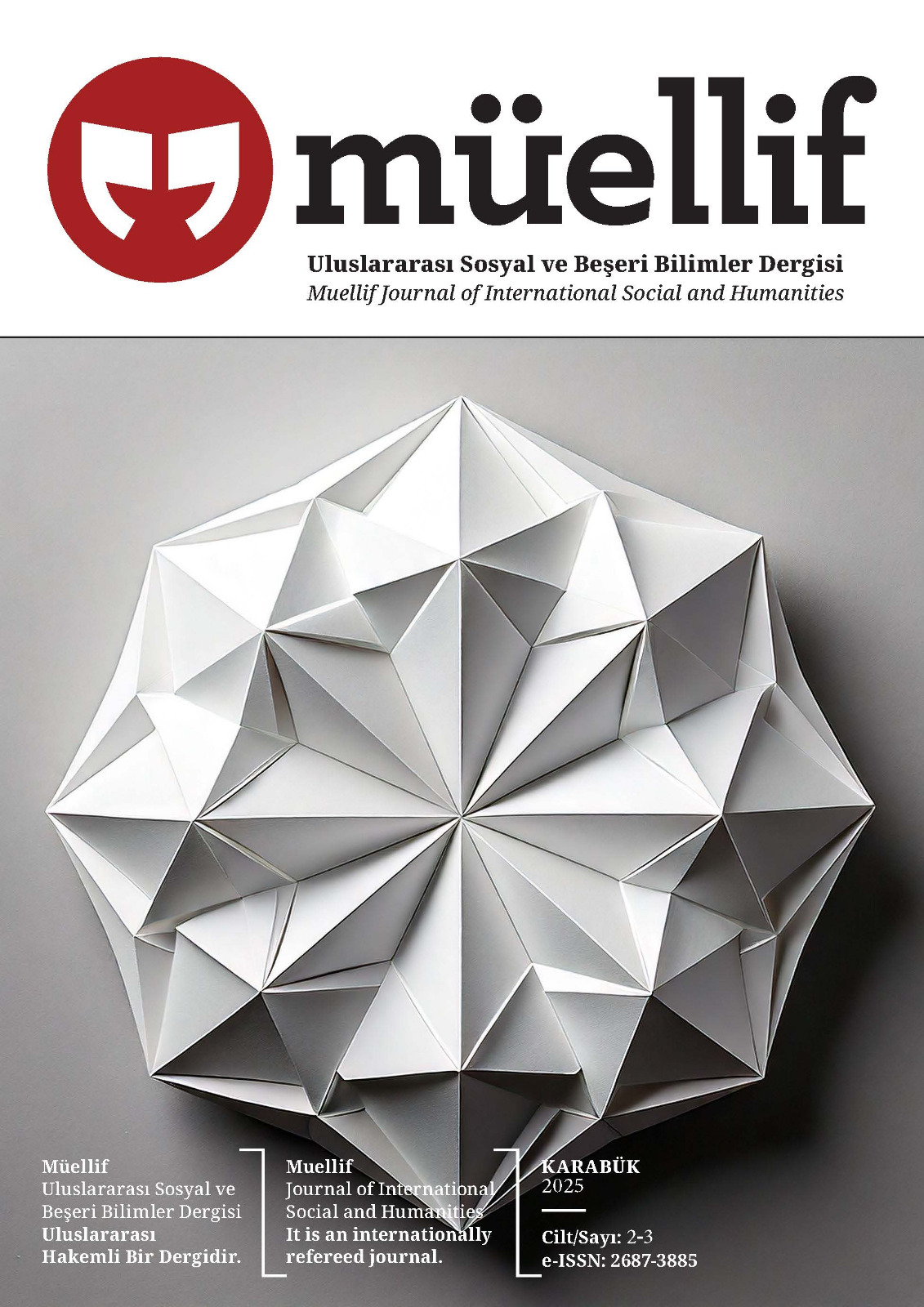THE ARTIST UNDONE: EXISTENTIAL TRAUMA, DIVINE AGENCY, AND SUICIDAL COMPULSION IN KISAKUREK’S CREATING A MAN
Anahtar Kelimeler:
Necip Fazıl Kısakürek- Creating A Man- Trauma Theory- Existential Trauma- Turkish Modernist Drama- Islamic Theology- Suicidal Ideation- Meta-theatrical Trauma- Artistic Guilt.Öz
Necip Fazıl Kısakürek’s intense drama Creating A Man meticulously charts the harrowing psychological disintegration of its protagonist, Hüsrev, an esteemed playwright whose artistic creation tragically and violently irrupts into empirical reality, thereby instigating a profound and uniquely configured existential trauma. This study argues that Hüsrev’s pronounced
suicidal ideation and his calamitous descent into a state socially identified as madness are not merely the esoteric manifestations of artistic temperament or creative exhaustion. Instead, they are posited as direct, devastating consequences of a catastrophic collapse of the ontological
boundaries between his artistic creation and empirical reality, specifically when his art violently and fatally irrupts into the lived world. Employing a trauma-informed critical methodology, this analysis engages with foundational theorists such as Cathy Caruth (1996), concerning the literal
and insistent return of the traumatic event, and Judith Lewis Herman (1992), regarding trauma’s symptomatic triad. Crucially, it also foregrounds the imperative articulated by Stef Craps (2013) for acknowledging the cultural specificity of trauma. The analysis anatomizes how the accidental killing of Hüsrev’s cousin, Selma—a chillingly precise reenactment of a pivotal scene from his own play, Death Anxiety—functions as the critical traumatic stressor. Hüsrev's subsequent torment revolves around unbearable guilt and the crushing weight of artistic-moral responsibility, compelling him into an agonizing interrogation of his agency vis-à-vis divine will, a conflict resonant within an Islamic theological framework. The symbolic significance of the fig tree, his father’s suicide, the shattered window, and his mimetic fusion with his fictional character are explored as manifestations of his trauma. Hüsrev's 'madness' is reinterpreted not as a clinical category but as a desperate response to an unassimilable existential crisis, his suicidal thoughts a compulsive drive towards pattern completion. By illuminating the theological dimensions of Hüsrev’s suffering, this study underscores Kısakürek's distinctive contribution to the literary portrayal of trauma, offering a culturally nuanced exploration of a mind undone by its creative power






